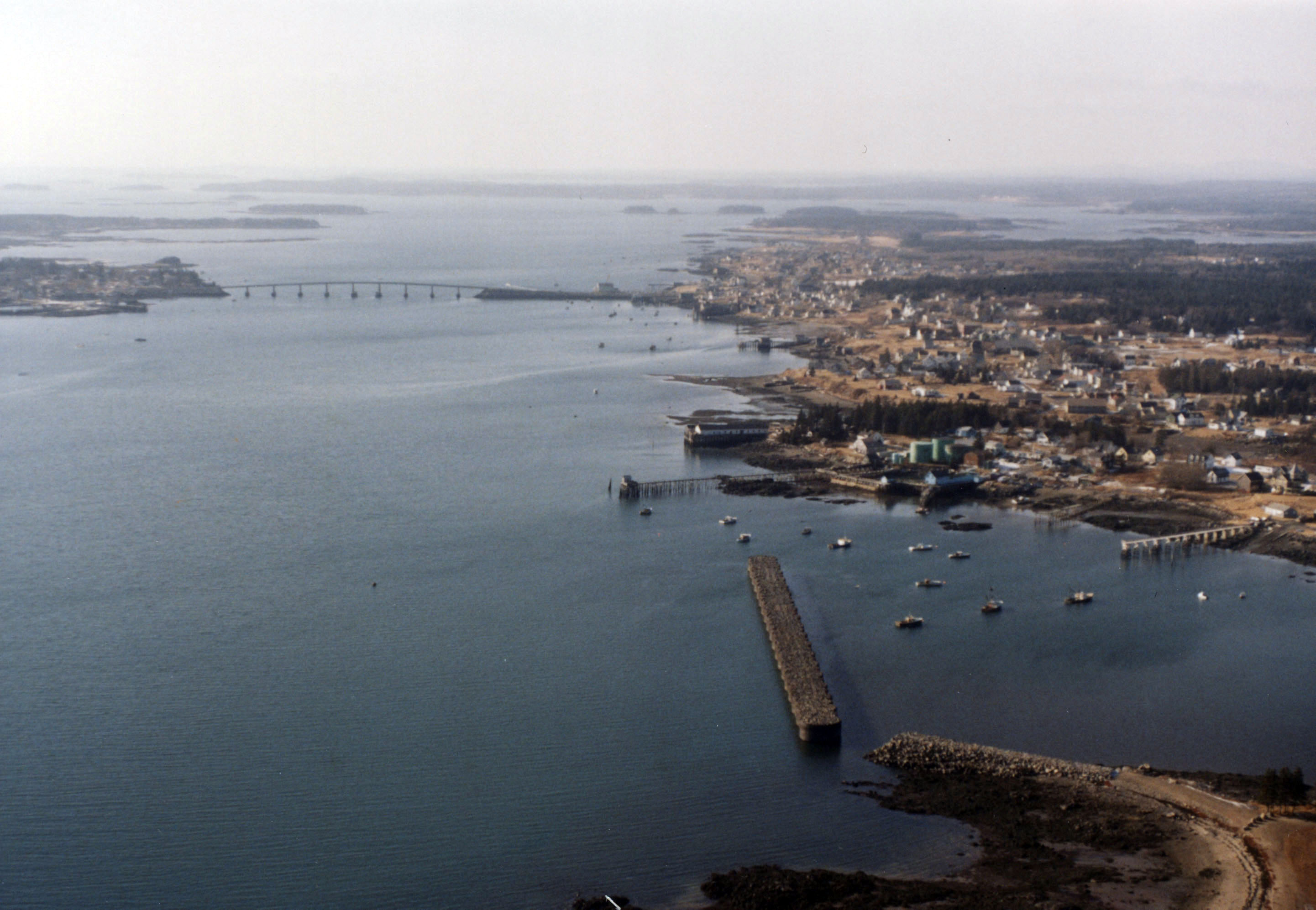
Jonesport Harbor in Jonesport lies on Moosabec Reach, about midway between Bar Harbor and Eastport. It is about 190 miles northeast of Portland and 40 miles southwest of the American-Canadian border at Calais. The town’s principal means of livelihood is commercial fishing, with the catch by local fishermen comprised of lobster, herring, scallops, shrimp, and finfish.
Because of its exposed location, Jonesport Harbor was vulnerable to storms and other natural forces. Fishing vessels were exposed to storm waves from the east and southeast, resulting in damage and lost fishing time. Ice packs drifting through the harbor also caused considerable damage. This exposure hampered the growth of commercial fishing and discouraged town officials from developing any adequate terminals from which the fishermen could operate. Although the state indicated that Jonesport Harbor was one of the 15 high activity fish ports with priority fish pier needs, a fish pier could not be constructed until the problems caused by the harbor’s natural exposure were eliminated or reduced. Since Jonesport depends almost entirely upon the fishing industry for its economic existence, a protected harbor is necessary for the economic health of the community and the safety of its fishing fleet.
The breakwater and sheltered anchorage reduce or eliminate damages to vessels caused by rough weather and ice flows. It also reduces the cost of mooring maintenance, increases fishing time, and provides new markets for fish.
In December 1987, the Corps began construction of a project at Jonesport Harbor that protects, maintains, and promotes the fishing industry. This project involved the construction of a 1,000-foot-long entrance channel, eight feet deep and 100 feet wide, extending from deep water in Moosabec Reach into Sawyer Cove; two anchorages within the cove, one eight feet deep and six acres in area, and one six feet deep and nine acres in area; and a 1,200-foot-long steel/combined cellular steel sheet pile and rubblemound breakwater at the entrance of the cove. The work was completed in December 1989 at a cost of $8.3 million.